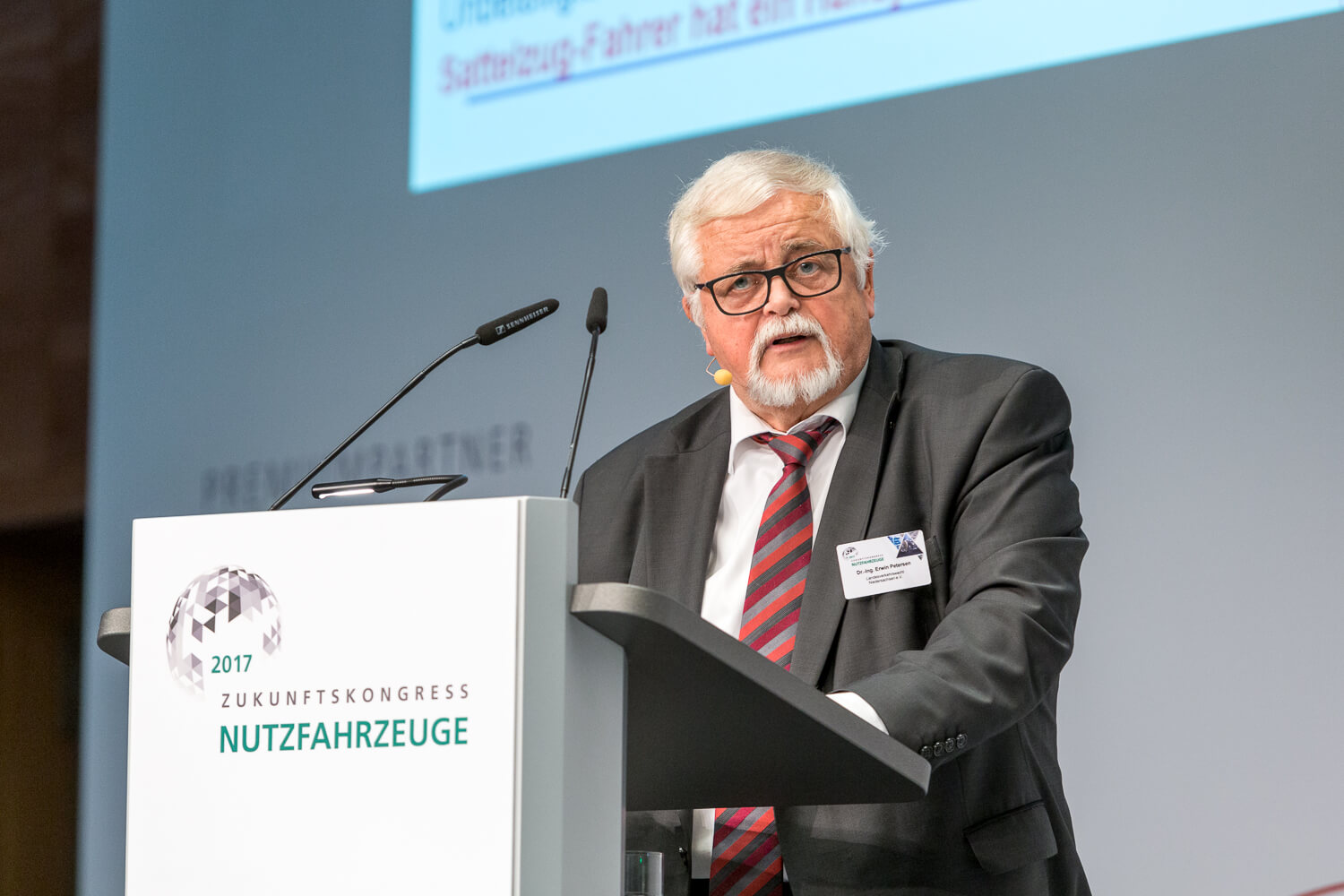Optimization potential not yet exhausted
Experience shows time and again that accidents with commercial vehicles are often combined with human suffering for those involved and high economic cost. Therefore, it is clear that everything possible must be done to ensure even more road safety in this vehicle segment as well. Where there is need for action, and which innovations manufacturers and suppliers already have on offer, or in development, were key topics at the second DEKRA Commercial Vehicle Outlook Conference in Berlin.
In his presentation, Dr. Erwin Petersen, vice-president of the Lower Saxony regional traffic association, highlighted the particular effectiveness of advanced emergency braking systems (AEBS). This is not without foundation. Collisions in lines of traffic make up a large proportion of the traffic accidents involving trucks. In these, a truck drives into a moving or stationary vehicle in front, usually at the end of a traffic queue, as a result of distraction, insufficient gaps between vehicles or unsuitable speed.
This can be seen in the figures collected as part of the “Niedersächsischen Werkstatt Autobahn” (Lower Saxony Highway Workshop). An analysis that was carried out of 138 serious heavy-truck accidents on highways in Lower Saxony in 2015 showed that around 50% of fatalities – 17 in a total of 33 – died in rear-end collisions. More than 80% of rear-end collisions were caused by trucks weighing over 7.5 tonnes and without AEBS. As Petersen explained, around 24% of these collisions would have been avoidable had the vehicles concerned had an AEBS on board in accordance with the applicable EU provisions. With AEBS already available as an optional extra, at least, that can avoid collisions with stationary vehicles, more than 80% of rear-end collisions and their consequent fatalities would have been avoided.
“To exploit the potential for avoiding accidents as fully as possible, all system manufacturers and vehicle manufacturers should rapidly further develop their emergency braking systems” said the road safety expert. Equally, the EU regulation should be adapted to the technical opportunities, to support the wide-spread introduction of the best systems as standard equipment. This also primarily applies with regard to improved object identification of stationary vehicles, upstream visual advance warning, further development and optimization of oversteering methods, and non-authorization of shutdown by the driver. The latter is clearly always a problem – and often because of a lack of knowledge of system terms and functions. “Because many drivers confuse AEBS with adaptive cruise control, they may, totally unnecessarily, switch off this life-saving system” as Petersen points out. Therefore, drivers should definitely be thoroughly trained in this point as part of the Professional Driver Qualification Act.

